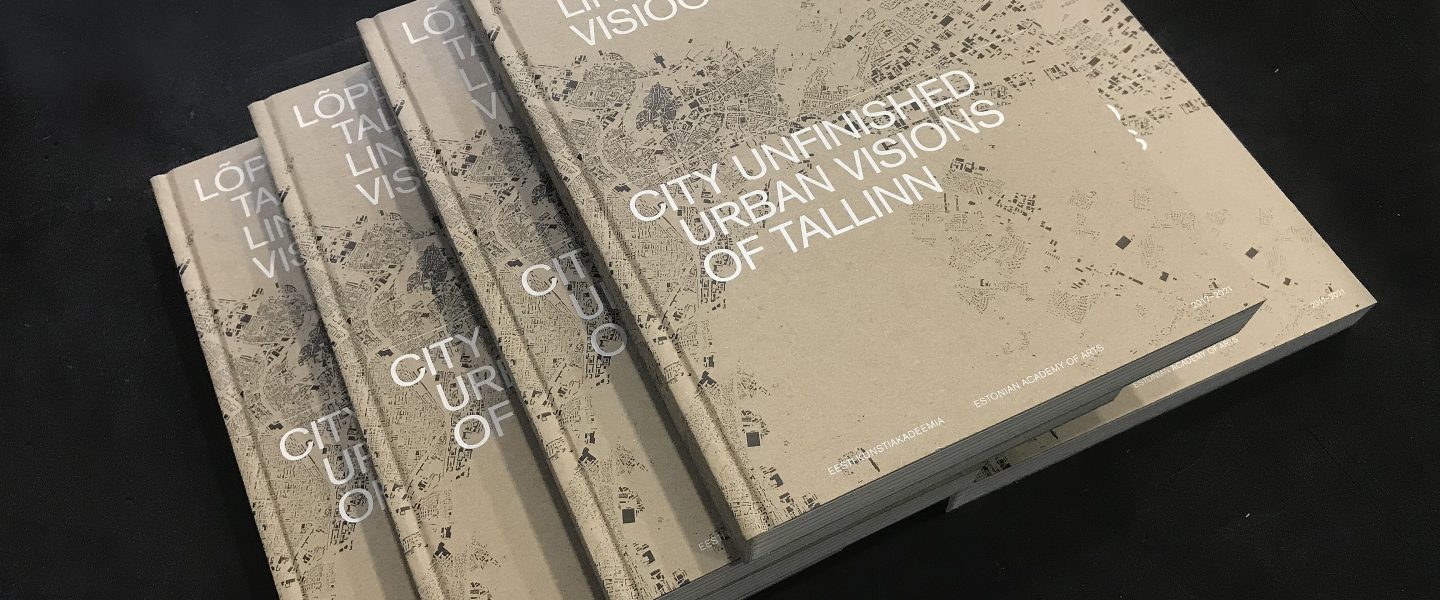
On November 3 at 3 pm, the results of the three-year Unfinished City research project will be presented in the form of a thorough 400-page publication of articles, interviews, maps and projects, titled “Unfinished City. Tallinn’s urban visions”. The parties who have contributed to the completion of both the research project and the book, will gather for event at the lobby of EKA, where you will also see a selection of scaled models and an animation which were prepared for the Unfinished City exhibition at the Estonian Museum of Architecture this spring. Both the research project and the book were completed with the support of the real estate company Kapitel.
The publication summarizes the discussions held during the three-year research project and is intended for everyone interested in thinking about Tallinn’s potential as a city of the future – what we expect from Tallinn in the future, what the city needs and what problems it has to overcome in order to be attractive both as a place to live and work.
25 authors from Estonia and elsewhere look at Tallinn’s potential from the perspective of architects and urban planners, dissecting the city as a whole and paying attention to key places. Separate chapters deal with the spatial future of Lasnamäe and other similar residential areas of the Soviet era, the potential of the bastion belt area surrounding the Old Town, the green areas of Tallinn and the blue/water network. In more detail, it is examined in which background system of rules, permits and statistics urban planning in Tallinn takes place, in comparison with other cities in Europe with a similar profile and size – Vilnius, Helsinki, Zurich, Copenhagen, Prague and Riga. In addition, it is asked how we could plan a better Tallinn using all the numerical data that can be collected about the city today with the help of technology.
At the end of the book, we take a longer look at the future and ask what Tallinn could be like by 2050 – what urban planning solutions would Tallinn need to be an example not only for Northern Europe, but for the whole world?
In-depth interviews and roundtable discussions with architects, urban planners, urban geographers, developers and city officials have guided, analyzed and interpreted the development of Tallinn between in-depth articles. In addition, next to each chapter you will find the work of EKA architecture and urban planning students dealing with the respective topic, looking for future scenarios for smaller centers in Tallinn, weighing in on ways to modernise panel housing areas, offering opportunities to develop the city’s green networks, etc.
The collection is illustrated by drone photos by architect and photographer Paco Ulman, exploring the borders of Tallinn – the areas where the city ends and hinterland begins. The photographer’s gaze is directed towards the heart of the city, circling the area covered by the book. In addition, the publication contains extensive maps that help to get a better idea of the spatial potentials set in the articles – how much of Tallinn’s territory is privately, city- or state-owned, Tallinn’s population density, infrastructure, building patterns and green areas compared to Vilnius, Helsinki, Zurich, Copenhagen, Prague and Riga.
The bilingual book was published by the Department of Architecture and Urban Planning of the Estonian Academy of Arts and edited by Pille Epner.
Compiled by: Andres Alver, Douglas Gordon, Kalle Komissarov, Eve Komp, Katrin Koov, Indrek Peil, Renee Puusepp, Johan Tali, Toomas Tammis, Siiri Vallner
Authors: Johannes Madis Aasmäe, Konstantinos Alexopoulos, Andres Alver, Grete Arro, Karin Bachmann, Damiano Cerrone, Kees Christiaanse, Marco D’Annuntiis, Douglas Gordon, Raul Kalvo, Kalle Komissarov, Eve Komp, Katrin Koov, Maroš Krivý, Andres Kurg, Mart Meriste, Andres Ojari, Johan Paju, Claudia Pasquero, Indrek Peil, Marco Poletto, Renee Puusepp, Andres Sevtšuk, Lily Song, Johan Tali, Toomas Tammis, Paco Ulman, Siiri Vallner.
Editors: Kaja Randam, Luisa Translation Agency (Greg Dunn, Sophie Marie Scrivener)
Translators: Kerli Linnat, Kaisa Kaer
Design: Studio Studio
“Unfinished City” can be purchased from larger bookstores, the Estonian Museum of Architecture and the EKA Library.
Additional information:
Pille Epner
book editor
EKA TAO leading specialist
